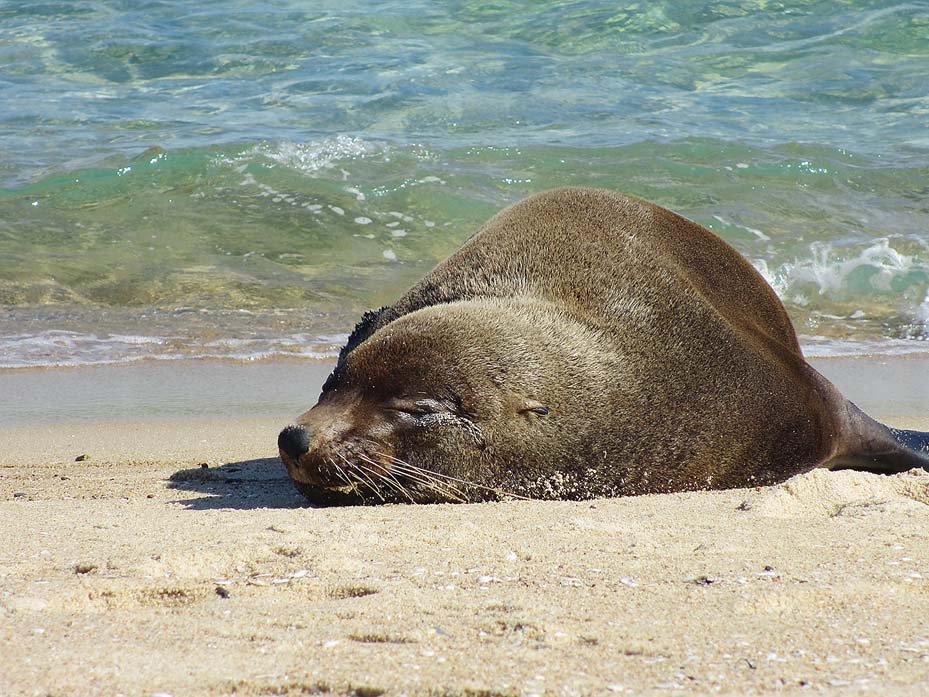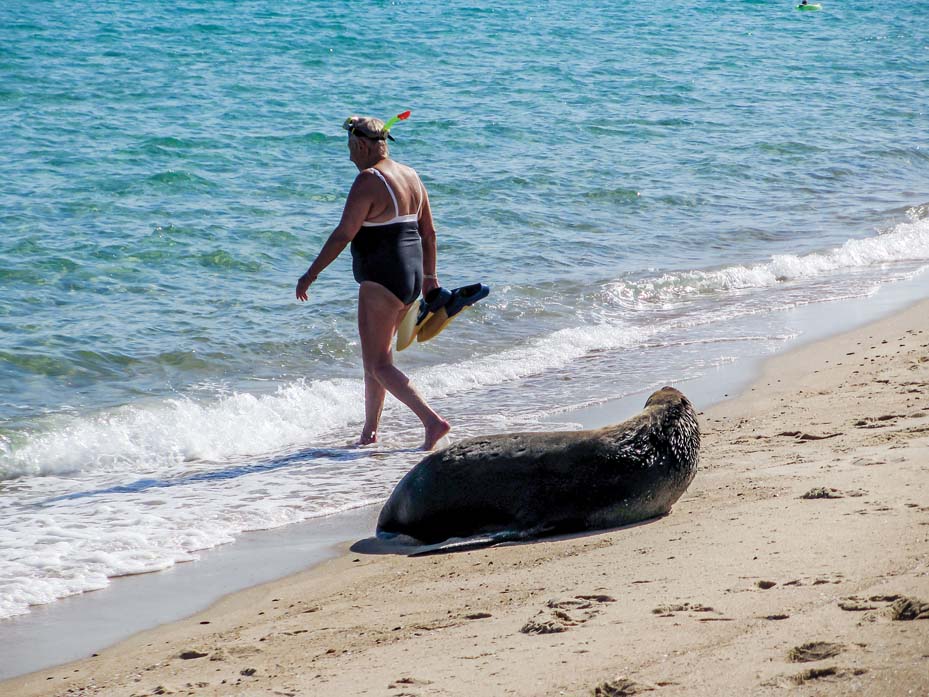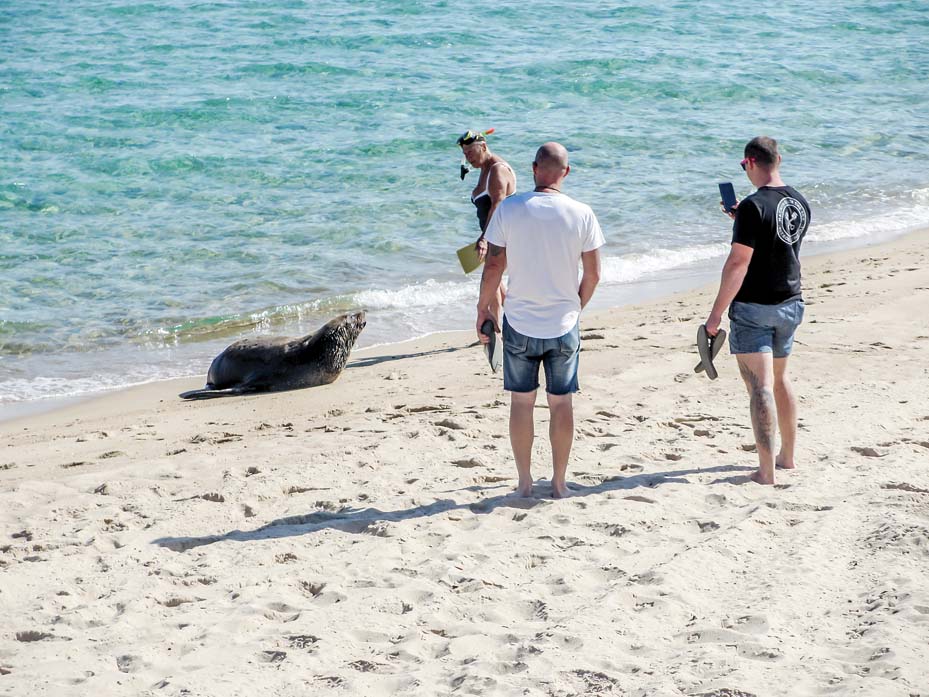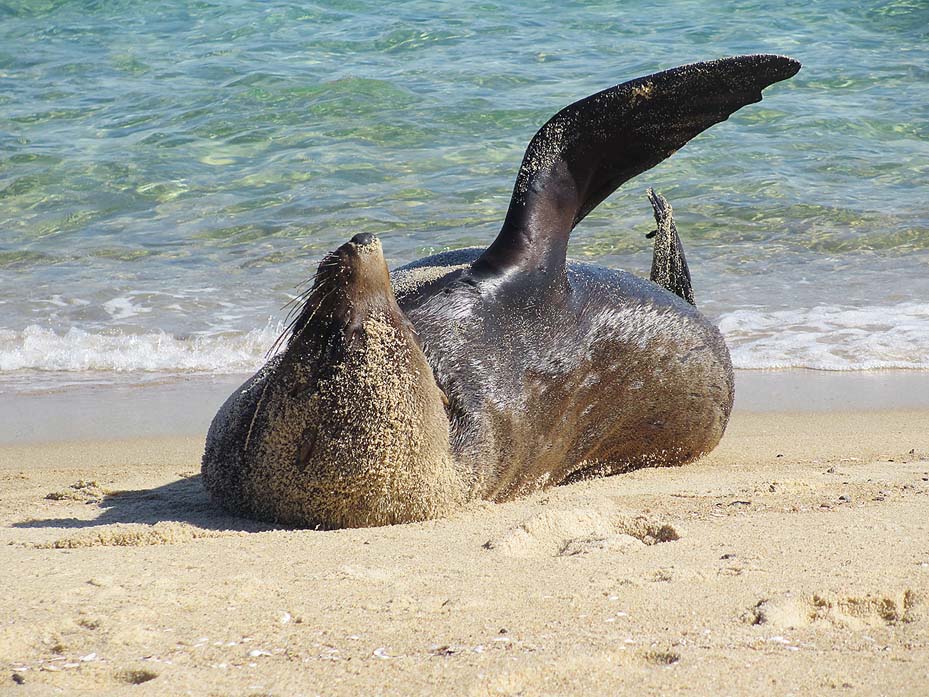
It may have been the calamari for breakfast or just the chance to nab a spot in the sun near the water’s edge.
Whatever the impulse to come ashore, the New Zealand fur seal lying on the beach at Dromana quickly began to draw a crowd.
Some sat on the seawall to get a view of the seal, which obligingly lolled about, waving its flippers in the air.
But it was the woman out for a swim that caused the most concern for volunteer seal monitor James Clemens.
Not content with swimming past, the woman came ashore and tried to shoo the seal back into the water.
Mr Clemens called out to her, warning that seals can bite if threatened.
Undeterred, the woman waved her arms around a bit more before giving up and returning to the sea herself.
Minutes later more volunteers arrived with posts and tapes to rope off an area for the seal.
Mr Clemens is often first on the scene when a seal is reported as coming ashore and usually must explain the laws about not approaching too close to resting seals.
Saturday’s incident was just more of the same.
The Department of Environment Lands Water and Planning says seals often raise their flippers to keep cool.
“People sometimes mistake this as a seal in distress. Seals holding flippers in the air should be left alone,” the DELWP states on its website.
“Seals see us as predators, and they may hurt themselves or their young trying to flee. Seals will be on land for a reason, such as to rest or molt.”
It also provides the following “rules”:
Do not approach within 30 metres of a seal on land, whether you are also on land or in the water.
Dogs are not permitted within 50 metres of a seal on land.
Do not approach within five metres of a seal on a boat ramp, pier or other man-made structure.
Dogs must not enter the water within 150 metres of a dolphin, 300 metres of a whale or 50 metres of a seal.
It is illegal to touch or feed a seal.
Call DELWP on 136 186 or Wildlife Victoria on 1300 094 535 for any seals that appear to need help.
First published in the Southern Peninsula News – 12 February 2019






